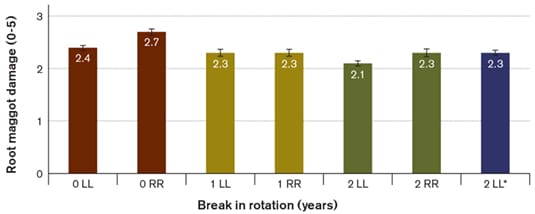Key Result
Crop rotation always yields better results.
Project Summary
The goal of this study is to see how often producers can put canola in their rotation to meet food and fuel demand for canola oil before yield results start to drop.
Neil Harker with Agriculture and Agri-Food Canada (AAFC) led two six-year studies at five sites — Lacombe, AB, Lethbridge, AB, Scott, SK, Melfort, SK and Swift Current, SK — to determine the agronomic and economic implications of growing canola in “tight” rotations, and to determine crop sequence effects on canola yield. Both studies wrapped up with the 2013 growing season.

The first study, initiated in 2008, compared results for continuous canola, various two-crop and three-crop rotations, and one six-year rotation, all of which included canola. For each rotation the study collected data on crop emergence, crop density, weed density, diseases and insect pests every year, and weed biomass and microbial diversity (years three and six only).
The second study included various risk mitigation treatments, including growing different canola cultivars in alternating years and growing mixtures of canola cultivars within a given year. Data collection included insect infestation levels, disease assessments, crop maturity date, grain yield, grain oil content, grain protein content, and fatty acid profile (years three and six only).
These rotation studies will continue beyond 2013, but some preliminary trends have been observed:
- Canola yields in 2012 (year 5) indicate that Liberty Link canola or Roundup Ready canola grown continuously always had lower yields than when grown in a three-year rotation with field peas and barley. There were yield benefits of simply rotating canola with wheat, but this was not significant at all sites.
- Blackleg incidence was lower and root maggot damage was lower when there was a two-year break between canola crops (Figure 1). (The published study is based on the root maggot results.)
- Yield differences observed at a number of the sites likely reflected levels of blackleg found in the trial. There was a relatively high incidence in 2012, which suggests that blackleg resistance is breaking down in some canola cultivars.
- There appears to be little or no disease management or yield benefits to growing different canola cultivars in alternating years and growing mixtures of canola cultivars within a given year.
- Overall, early indications are that production risks are higher in continuous canola, or canola in a two-year rotation depending on the variety/location. These results are likely to be confirmed in the last year of this study.





